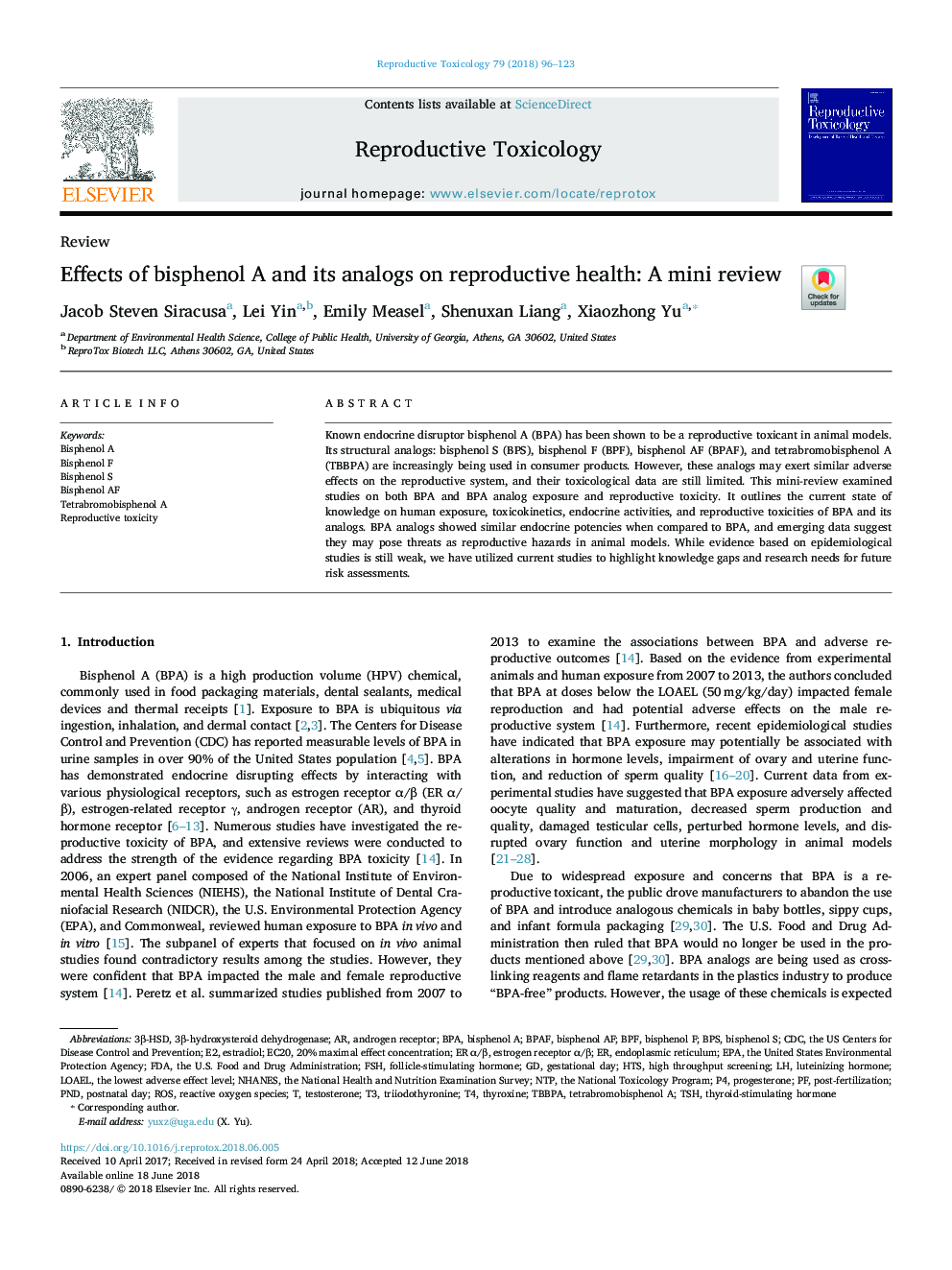| Article ID | Journal | Published Year | Pages | File Type |
|---|---|---|---|---|
| 8552215 | Reproductive Toxicology | 2018 | 28 Pages |
Abstract
Known endocrine disruptor bisphenol A (BPA) has been shown to be a reproductive toxicant in animal models. Its structural analogs: bisphenol S (BPS), bisphenol F (BPF), bisphenol AF (BPAF), and tetrabromobisphenol A (TBBPA) are increasingly being used in consumer products. However, these analogs may exert similar adverse effects on the reproductive system, and their toxicological data are still limited. This mini-review examined studies on both BPA and BPA analog exposure and reproductive toxicity. It outlines the current state of knowledge on human exposure, toxicokinetics, endocrine activities, and reproductive toxicities of BPA and its analogs. BPA analogs showed similar endocrine potencies when compared to BPA, and emerging data suggest they may pose threats as reproductive hazards in animal models. While evidence based on epidemiological studies is still weak, we have utilized current studies to highlight knowledge gaps and research needs for future risk assessments.
Keywords
3β-HSDthe United States environmental protection agencyFDAEC203β-Hydroxysteroid dehydrogenaseLOAELBPFBPSBPAFNHANESBPACDCNTPHTSEPAEstradiolThe National Health and Nutrition Examination SurveyBisphenol AFBisphenol Fbisphenol SBisphenol Agestational dayendoplasmic reticulumhigh throughput screeningfollicle-stimulating hormoneluteinizing hormoneFSHProgesteroneAndrogen Receptor
Related Topics
Life Sciences
Environmental Science
Health, Toxicology and Mutagenesis
Authors
Jacob Steven Siracusa, Lei Yin, Emily Measel, Shenuxan Liang, Xiaozhong Yu,
